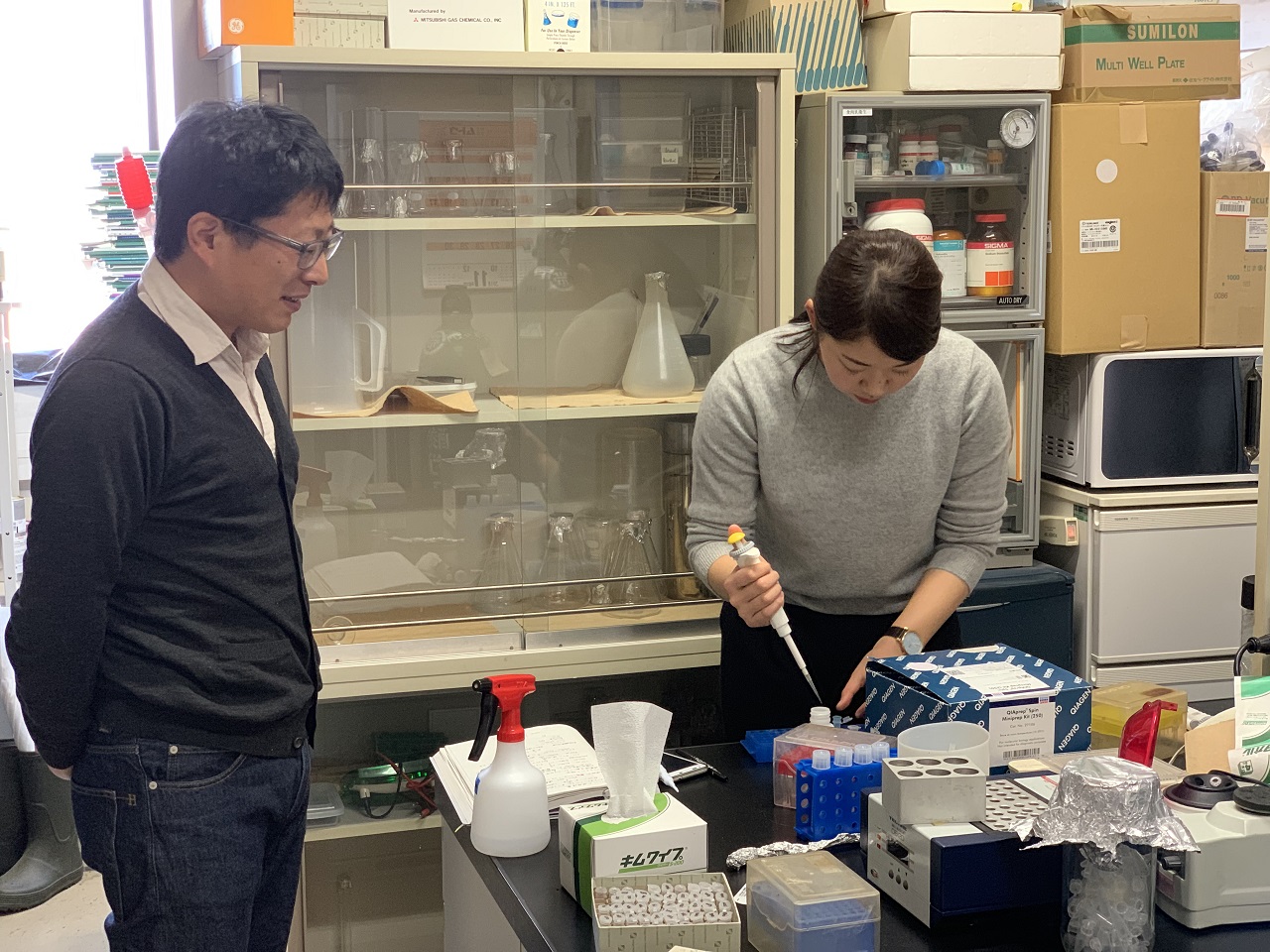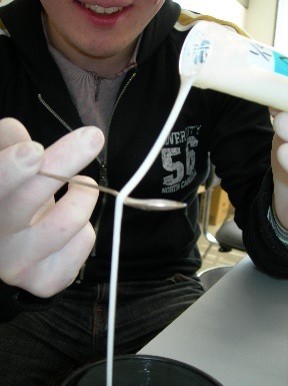FUKUDA Kenji Professor
Field
Keyword
Instructable research topic for doctoral thesis
- 十勝産乳酸菌ライブラリーの構築
- 発酵馬乳由来乳酸菌L. rhamnosus FSMM22が分泌するRpsSの細胞表層提示機構の解明
- 発酵馬乳由来Lactobacillus rhamnosusの腸管細胞定着に関する研究
- 発酵馬乳由来Lactobacillus rhamnosusの病原菌競合的排除に関する研究
- 発酵馬乳由来プロバイオティクス候補乳酸菌L. rhamnosus FSMM15が生産する6-phospho-b-galactosidaseの研究
- 初乳ヨーグルト投与による子牛の下痢予防効果の検証
- 高粘性多糖生産性乳酸菌Lactobacillus fermentum MTCC25067のEPS生合成関連遺伝子の機能解析
- 高粘性多糖生産性乳酸菌Lactobacillus fermentum MTCC25067の生産する多糖の構造物性相関解析
- 高粘性多糖生産性乳酸菌Lactobacillus fermentum MTCC25067の生産する多糖の機能性解析
- 高粘性多糖生産性乳酸菌Lactobacillus fermentum MTCC25067の多糖大量生産系の確立
- 北海道産の生乳から単離された多糖生産性乳酸菌に関する研究
- 十勝ヤギ生乳から単離された由来プロバイオティクス候補乳酸菌L. rhamnosus YM-1およびYM-3が示す抗菌活性に関する研究
- 乳に含まれるオリゴ糖ヌクレオチドのプレバイオティクス効果および腸管上皮細胞への影響に関する研究
- モンゴル産発酵乳由来ペプチドの抗菌活性およびプレバイオティクス機能に関する研究
- ウシ初乳由来odorant-binding proteinの天然リガンドの同定
- ウシ初乳由来odorant-binding proteinの二量体化とリガンド結合特性に関する研究
- ウシ初乳由来トリプシンインヒビター(CTI)に関する研究
Message
我々ヒトを含む哺乳類は、生まれてしばらくの間、母親から与えられる乳だけで成長します。ミルクの中には、生まれたばかりの子に必要なすべての成分が含まれているからです。その中には、大人にとっても有用な物質が数多く存在し、食品への応用が期待できます。特に、免疫力を強めたり有害微生物を抑制する成分は、昨今問題になっている抗生物質の多用を避けるための有用な手段となりえます。また、古来ヒトと長い付き合いのある乳酸菌は、食品の保存に利用できるのみならず、上手に摂取すれば我々の健康を保つために役立つことが期待できます。このような観点から、乳と乳酸菌の基礎科学と応用について研究しています。
| Academic degree | D.Agr. |
| Self introduction |
I'm from Hyogo Prefecture. My hobbies are Land-locked trout fishing and Telemark skiing. Recently I started playing acoustic guitar. |
| Room address | General Research Building 3 |
| Room number | 512 |
| Mail address | fuku  obihiro.ac.jp
obihiro.ac.jp |
Belongs
Research Center for Global Agromedicine/Department of Agriculture and Animal ScienceResearch Department/Department of Life and Food Sciences/Division of Food Science/Section of Biomolecular Structure and FunctionResearch Center for Global Agromedicine/Director GeneralIntroduction
Lactic acid bacteria are indispensable for the fermentation of milk, and we're very familiar with these microorganisms. Although they have the ability to metabolize the sugar taken into cells and to secrete lactic acid outside bacterial cells, some produce extracellular polysaccharides by connecting lactic acid bacteria with sugar. Since extracellular polysaccharides are extremely diverse in structure, they're expected to have various physiological functions and physical properties. I isolated the MTCC 25067 strain of Lactobacillus fermentum, which produces a high-viscosity extracellular polysaccharide, from dahi (a traditional fermented Indian milk) and clarified the chemical structure and physical properties of the extracellular polysaccharide that it secretes. (Refer to the figure ”Highly viscous yoghurt made with polysaccharide-producing lactic acid bacteria.”)
Although the extracellular polysaccharides that are produced by lactic acid bacteria are very attractive materials from an industrial point of view, there are problems in terms of quality stability and yield. Therefore, extracellular polysaccharides are not applied to industrial use. To overcome this limitation, I aim to produce biosynthesis-related gene-disrupted strains of extracellular polysaccharides and to develop a method to partially synthesize extracellular polysaccharides in vitro.
The ultimate goal is the synthesis of extracellular polysaccharides. I hope to contribute to the food industry by developing useful new technologies related to lactic acid bacteria.
| Related industries | Food, Animal husbandry |







